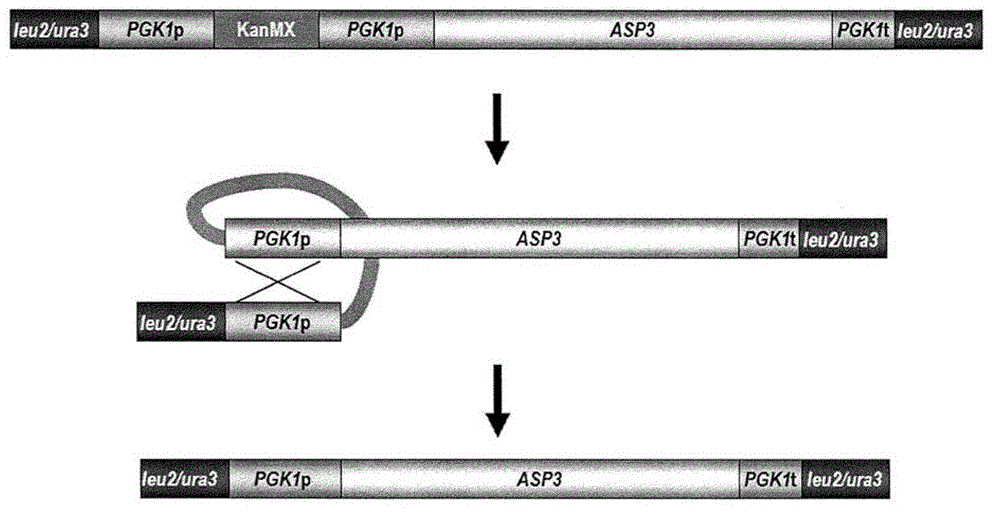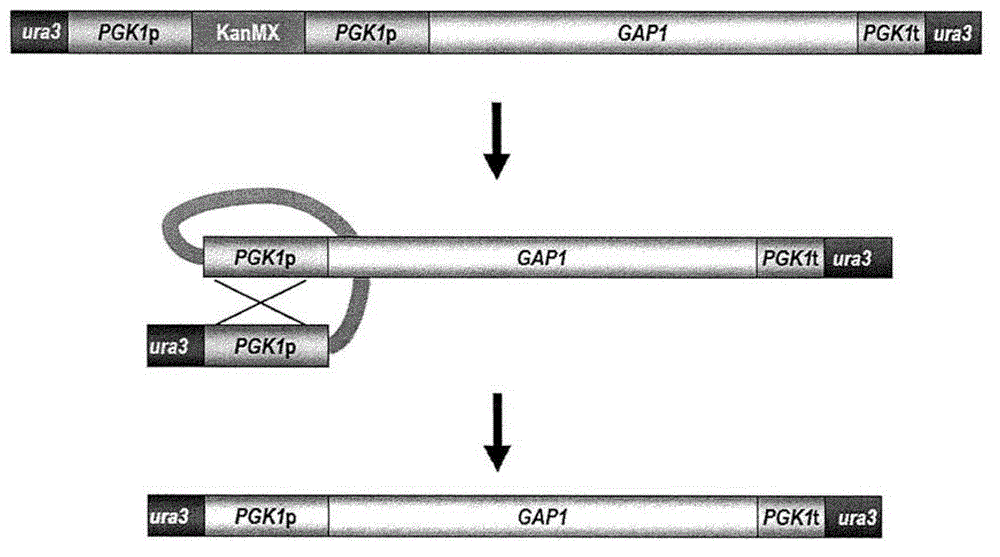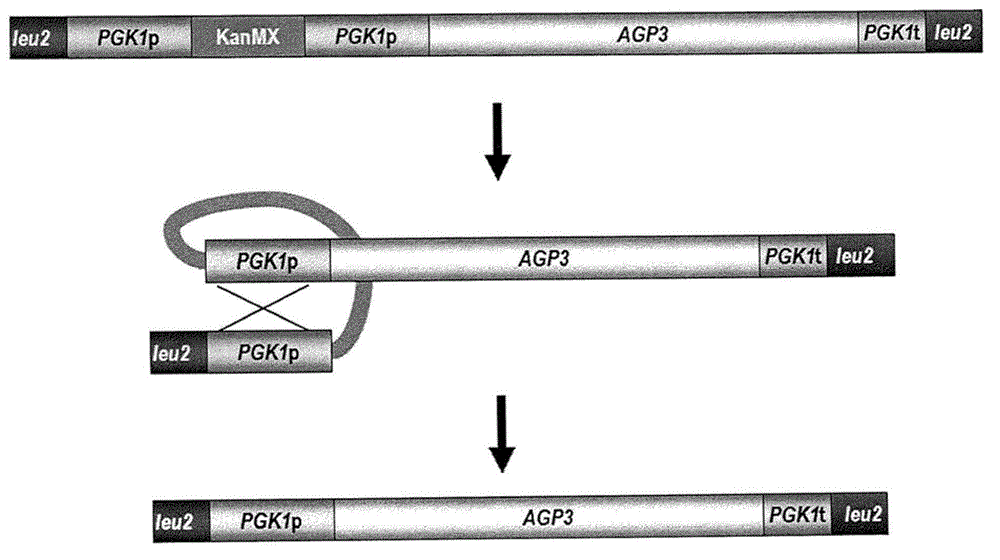Functional enhancement of microorganisms to minimize production of acrylamide
A microorganism and asparagine technology, which is applied to genetically modified microorganisms and food fields with reduced acrylamide content, can solve the problems of reducing the deep fermentation time of acrylamide and being impractical.
- Summary
- Abstract
- Description
- Claims
- Application Information
AI Technical Summary
Problems solved by technology
Method used
Image
Examples
Embodiment 1
[0103] Example 1: Cloning and constitutive expression of ASP3, ASP1, GAP1, GNP1, AGP1, AGP2, AGP3 and GAT1 genes and deletion of URE2, TOR1, DAL80, and GZF3 in Saccharomyces cerevisiae strains
[0104] For clonal selection, the antibiotic resistance marker kanMX was used. Transform industrial / commercial baker's yeast or experimental strains to constitutively express ASP3, ASP1, GAP1, GNP1, AGP1, AGP2, AGP3 or GAT1, or a combination of ASP3 and GAP1 or a combination of ASP3 and GAT1, or to delete URE2, TOR1 , DAL80 or GZF3 genes or a combination with tor1Δ and ASP3 overexpression. The only genetic and metabolic modifications are the expected constitutive expression of: ASP3, ASP1, GAP1, GNP1, AGP1, AGP2, AGP3, or GAT1, or a combination of ASP3 and GAP1 or a combination of ASP3 and GAT1, or deletion of URE2, TOR1, DAL80 and GZF3 genes or a combination with tor1Δ and ASP3 overexpression.
Embodiment 2
[0105] Example 2: Transformation of Yeast with ASP3, ASP1, GAP1, GNP1, AGP1, AGP2, AGP3 or GAT1 Gene Cassette or URE2 Deletion Gene Cassette
[0106] Yeast is transformed with a recombinant nucleic acid containing the ASP3, ASP1, GAP1, GNP1, AGP1, AGP2, AGP3 or GAT1 gene under the control of the PGK1 promoter and terminator signal. The PGK1 promoter is not affected by NCR. The URE2 deletion cassette contains 5' and 3' URE2 flanking sequences for target gene deletion.
Embodiment 3
[0107] Example 3: Self-cloning gene cassettes allowing removal of selectable markers
[0108] Figure 1-8 It is shown how the designed gene cassette allows selection of transformed yeast and subsequent removal of antibiotic resistance markers by direct repeats as used in the Examples described below. As shown in other examples, the ASP1 self-cloning gene cassette was constructed, transformed and antibiotic resistance marker removed in a similar manner.
PUM
 Login to View More
Login to View More Abstract
Description
Claims
Application Information
 Login to View More
Login to View More - R&D
- Intellectual Property
- Life Sciences
- Materials
- Tech Scout
- Unparalleled Data Quality
- Higher Quality Content
- 60% Fewer Hallucinations
Browse by: Latest US Patents, China's latest patents, Technical Efficacy Thesaurus, Application Domain, Technology Topic, Popular Technical Reports.
© 2025 PatSnap. All rights reserved.Legal|Privacy policy|Modern Slavery Act Transparency Statement|Sitemap|About US| Contact US: help@patsnap.com



